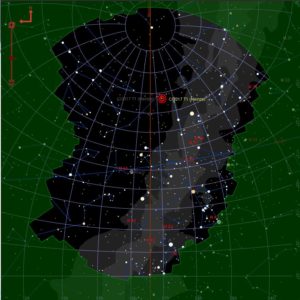Jan 052018
Comet Heinze continues to approach the Sun. As of the 3rd of January it was still in the constellation Lynx and still outside Earth’s orbit. The comet will not cross Earth’s orbit until the 16th of January but by then the Earth will be well ahead of and well below the comet.
| All objects that orbit the Sun obey Kepler’s laws of motion. This comet is no exception. The 2nd law states “a line segment joining an orbiting object and the Sun sweeps out equal areas during equal intervals of time”. Simply stated, the closer the object is to the Sun, the faster it moves. You can see this in action by comparing the previous animations. Each of the individual exposures are 300 seconds long. By comparing the length of the streaks made by the stars you can easily see the comet moving farther in 300 seconds the closer it gets to the Sun. |
Also visible in the first exposure is the bright streak of a satellite. There are so many satellites in orbit around the Earth it is not unusual for a series of exposures to capture one. For long exposure images I have to leave those sub-exposures out of the processing. The bright streak will skew the final image.
